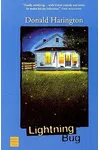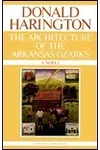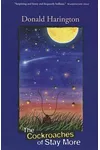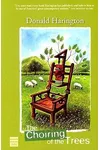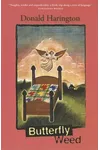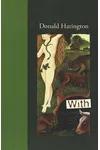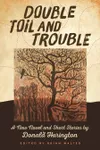Picture an American storyteller who spun a mythical Ozark town into literary gold—meet Donald Harington! Known as 'America’s greatest unknown writer' by Entertainment Weekly, Harington crafted the Stay More series, a vibrant blend of humor, folklore, and magical realism set in a fictional Arkansas hamlet. Despite losing most of his hearing at age 12, he wove the rhythms of Ozark speech into novels that feel like a warm, quirky chat on a porch swing.
Born in Little Rock, Arkansas, Harington’s summers in Drakes Creek shaped his love for the Ozarks’ dialect and tales. His unique perspective as a visual artist and novelist painted Stay More as a place where hillbillies, ghosts, and even cockroaches tell stories of love, survival, and wonder.
The Making of Donald Harington
Donald Douglas Harington was born on December 22, 1935, in Little Rock, Arkansas. At 12, meningitis stole nearly all his hearing, but young Donald had already soaked up the Ozark vernacular during summers at his grandparents’ general store in Drakes Creek. This tiny town became the blueprint for Stay More. Though he dreamed of writing novels, Harington studied art history, teaching at colleges in New York, Vermont, and South Dakota before settling at the University of Arkansas for 22 years until his retirement in 2008.
Encouraged by novelist William Styron, Harington published his first novel, The Cherry Pit, in 1965, earning a PEN/Faulkner nomination. This early success paved the way for his true passion: chronicling the eccentric world of Stay More, where his deafness amplified his knack for capturing voices he could no longer hear.
Donald Harington’s Unforgettable Stories
Harington’s Stay More series is a love letter to the Ozarks, blending magical realism, bawdy humor, and lyrical prose. His novels, often compared to Faulkner’s Yoknapatawpha County, feature recurring characters and a playful narrative style. The Architecture of the Arkansas Ozarks (1975), his magnum opus, traces six generations of the Ingledew family through Stay More’s evolving buildings, illustrated by Harington himself. Critics hailed it as a jubilant, picaresque epic.
Lightning Bug (1970) introduced Stay More’s enigmatic postmistress, Latha Bourne, whose wit and sexuality anchor many tales. With (2004) is a haunting yet tender story of Robin Kerr, a girl kidnapped and left to survive in the Ozark wilds with animals and a ghostly boy as companions. The Cockroaches of Stay More (1989) takes a whimsical detour, giving voice to the town’s insect residents with colorful dialect and sly humor. Harington’s style—rich with Ozark idioms, metafictional twists, and sensual undertones—makes every page a delight.
Inspired by literary giants like Vladimir Nabokov and Gabriel García Márquez, Harington mixed modernist techniques with folklore, creating a world both grounded and surreal. His refusal to be boxed as a 'regional writer' gave his work universal appeal, celebrating the ordinary with infectious joy.
Why Donald Harington Matters
Though Harington never achieved mainstream fame, his cult following among readers and writers like Ron Rash and Peter Straub speaks to his genius. Dubbed 'America’s Chaucer,' he preserved the vanishing Ozark culture while crafting timeless stories of human connection. Awards like the Robert Penn Warren and Oxford American Lifetime Achievement honored his subtle yet powerful influence on American literature.
Harington’s legacy lives in Stay More, a place where readers can escape to a world of wonder. His work reminds us that even lesser-known voices can leave a lasting echo, blending humor, heart, and the magic of storytelling.
- Born: December 22, 1935, Little Rock, Arkansas
- Key Works: The Architecture of the Arkansas Ozarks, Lightning Bug, With, The Cockroaches of Stay More
- Awards: Robert Penn Warren Award, Oxford American Lifetime Achievement
- Died: November 7, 2009, Springdale, Arkansas
Snag The Architecture of the Arkansas Ozarks and dive into Harington’s whimsical, heartfelt Stay More saga!
